Moss in a garden is like comfort food for the soul. There is arguably no other plant that conjures up primordial feelings of mystery, peace and nurture. Fossils have been discovered that date moss back to 400 million years ago, indicating that it preceded the fern. Bringing moss into our gardens creates a link to the past, satisfying us on a deep and basic level. In addition, it is very tactile, just begging to be touched.
How to successfully grow moss and how to integrate it into a cohesive garden design remain elusive to many gardeners. Many moss gardeners attribute their success to a partnership with nature, concluding that in the end, moss will do what it wants to do.
Let's take a look at moss: how to grow it and use it effectively in a garden design.
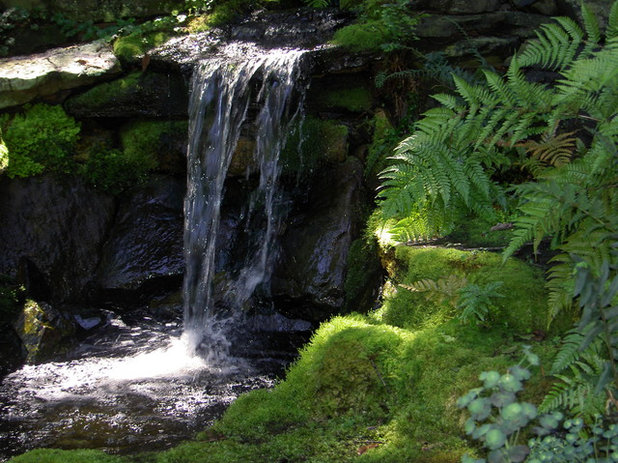
Jay Sifford Garden Design
Moss most frequently grows in damp or humid areas. Diverse species can grow in sun or shade, in soil, on rocks and on tree trunks. In summer it can be a plush carpet that anchors our gardens; in winter its luxuriant evergreen color provides that much-needed respite from seasonal doldrums.
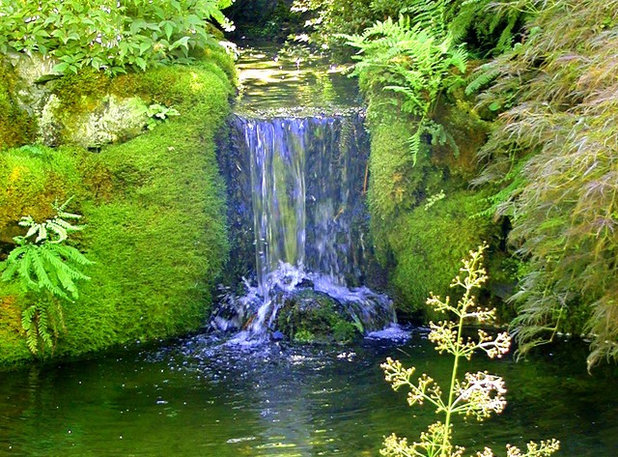
AMS Landscape Design Studios, Inc.
Moss has root-like structures called rhizoids that hold it in place. However, it has no vascular system; it transports nourishment through osmosis. This is why moss tends to grow best at a water's edge, where it can absorb water directly from a pond, spreading it throughout the patch.
Because moss holds moisture so well, a plethora of shallow-rooted plants, including ferns, grow readily in it — bringing enjoyment and deep satisfaction to many woodland gardeners.
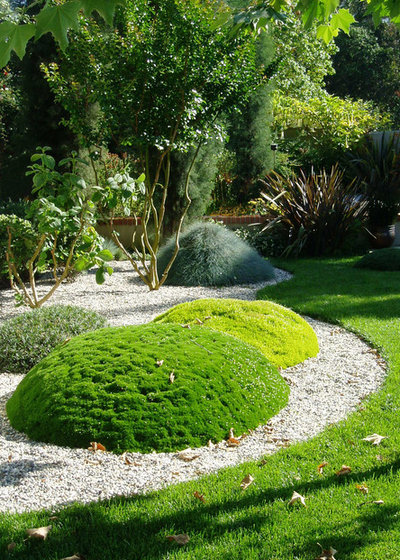
Irish moss (
Sagina subulata, zones 4 to 8) and Scotch moss (
Sagina subulata 'Aurea'), along with Club moss (
Selaginella kraussiana, zones 6 to 10), are not mosses at all. Selaginella is actually more closely related to ferns than to true moss.
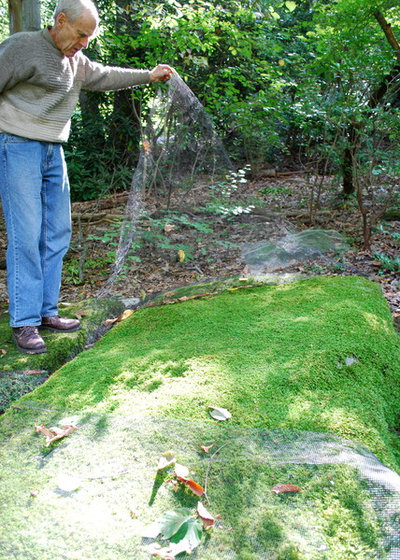
Jay Sifford Garden Design
How to Grow MossOn a recent trip to Pennsylvania, I was fortunate enough to visit the moss garden of David Benner. Benner has been growing moss in his garden for more 50 years. One of his sons runs Moss Acres, a specialty mail-order moss nursery. Benner's appreciation for this primitive plant was evident as he gave me a two-hour tour of his garden. Here he is shown with a prized moss-covered rock that he has been nurturing for 50 years.
Let's look at how Benner grows moss.
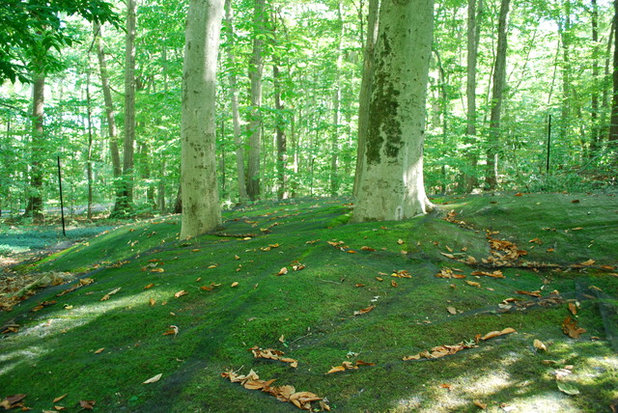
Jay Sifford Garden Design
Moss, such as this sheet moss, grows steadily in a prepared bed. Moss grown this way requires acidic soil, full to partial shade, moisture and protection from leaf litter. You will note in these photos that Benner covers his moss with a fine plastic mesh in autumn so he can easily remove fallen leaves.
He says moss will grow where it wants to grow. To encourage it, he recommends preparing a flat, shaded section of your garden by making sure that the chosen area has moisture-retentive soil and is raked clean. He recommends amending garden soil with humus, which retains moisture and will provide the moss with essential nutrients.
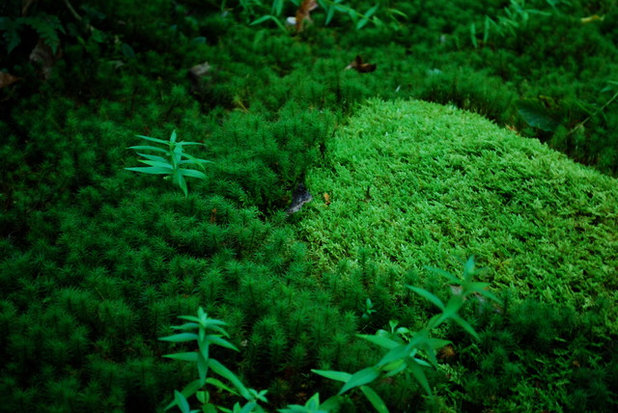
Jay Sifford Garden Design
For growing moss, such as this hair cap and fern moss, soil with a pH of 4.5 to 5 is ideal. You can achieve the proper pH by adding aluminum sulfate to your soil. You can also use powdered sulfur, but it can take several months for that to become effective.
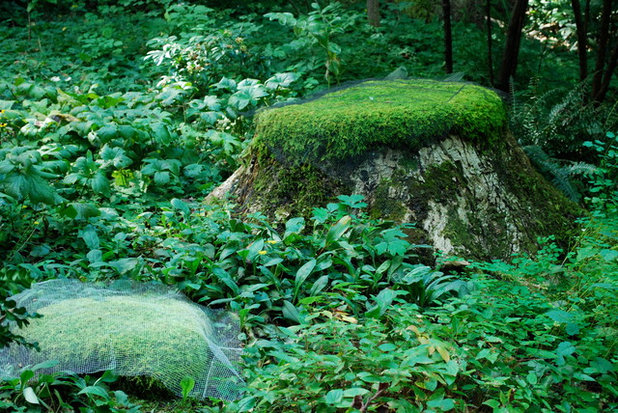
Jay Sifford Garden Design
You can also grow moss on rotting wood, as on this tree stump in Benner's garden. Moist, decomposing wood provides the perfect pH to support moss.
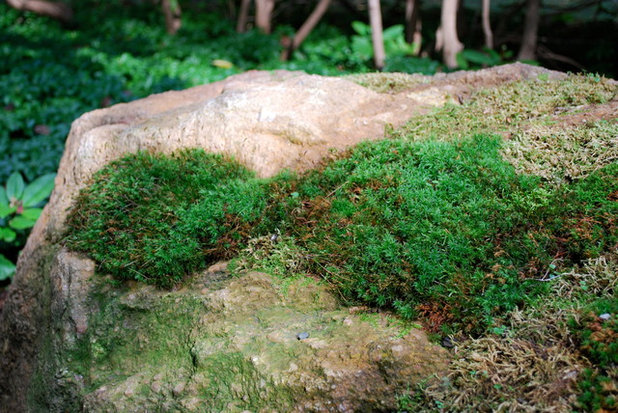
Jay Sifford Garden Design
Finally, you can grow moss on rocks. Rock cap moss would be right at home on a boulder such as this one, assuming that it receives enough moisture and shade.
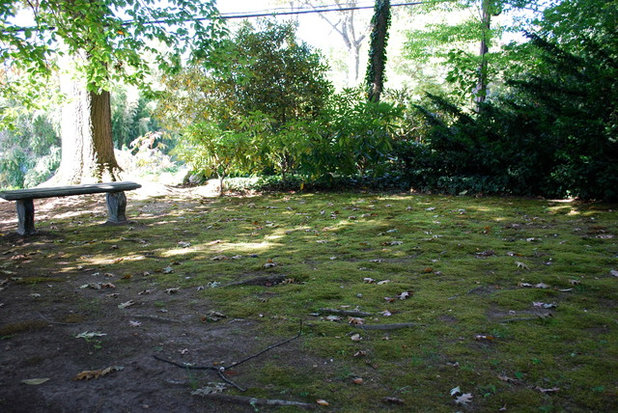
Jay Sifford Garden Design
You can introduce moss into your garden in various ways. The mere act of soil acidification, coupled with proper preparation, will most likely encourage moss to grow on its own. This moss garden was created by this method, supplemented with a bit of transplanting, and is three years old. A moss garden is not for the impatient. It can take an average of five years to firmly establish a moss garden through soil acidification.
Moss may be commercially purchased. Specialty nurseries such as Moss Acres sell it by the square foot. You can also introduce it by crumbling dry moss and scattering it throughout your planting area, as long as the area stays consistently moist.
Finally, slurries or "milkshakes" of moss can be prepared by placing moss, along with buttermilk or plain yogurt, in a blender and mixing thoroughly. A can of beer plus two cubes of sugar, or even manure diluted with water, may be mixed with the moss as well.
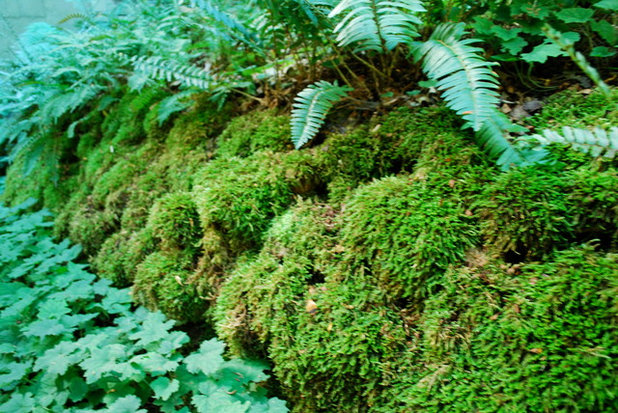
Jay Sifford Garden Design
How to Use Moss in Your GardenAs is evident from the photos of Benner's garden, moss is right at home in a rustic woodland garden. This photo shows 50-year-old moss happily growing on his rock wall. Moss will generally be at home where ferns and rhododendron flourish.
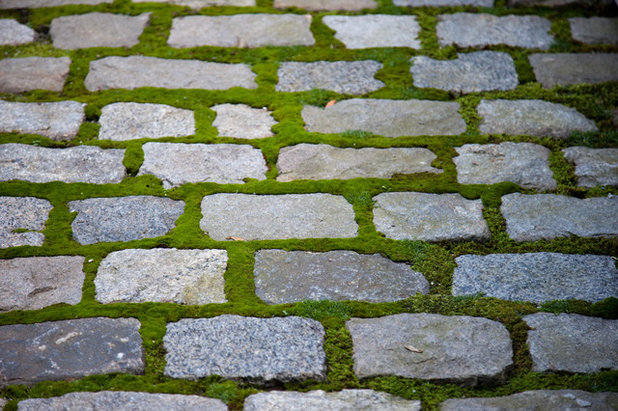
Matthew Cunningham Landscape Design LLC
Moss can also grow beautifully between patio pavers if the area is shaded and moist. Soil acidification is the best way to encourage moss to grow this way, although it can be successfully transplanted. Don't cut it too thinly, as it can readily dry out before it has become established.

New Eco Landscapes
You can also use moss to dress up planters, assuming you pair it with acid-loving plants, site it in shade and keep it moist.
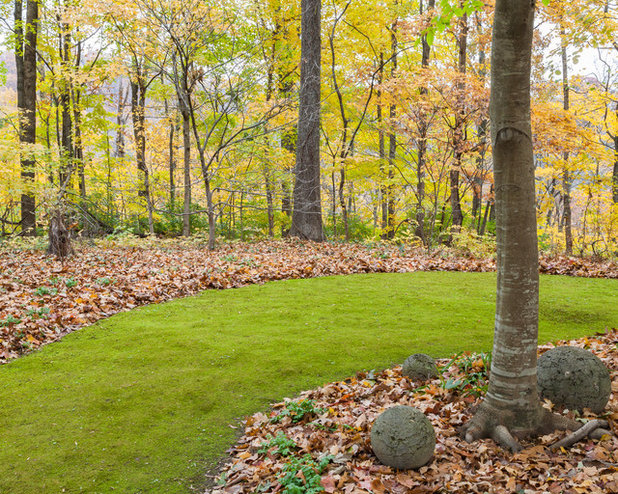
J. Paul Moore Photography
Moss can be recruited for use as a lawn, too. If you already have patches of moss growing in your shaded turf, take a cue from nature and consider replacing your lawn with moss. It can take limited foot traffic once it has become established.
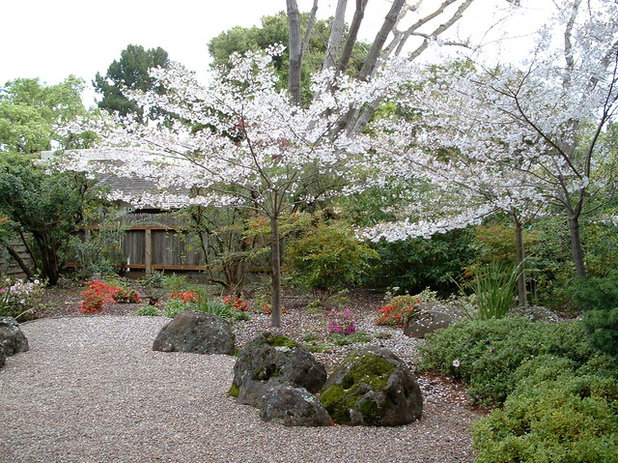
Kikuchi + Kankel Design Group
What could be a more fitting home for moss than a Japanese garden? Indeed, moss gardening originated in Japan over a thousand years ago.
More: How to give a garden soul





